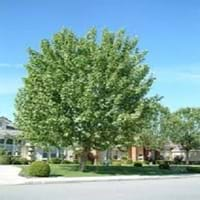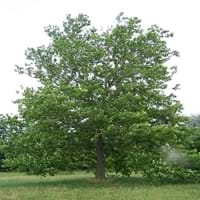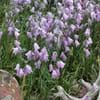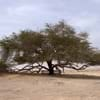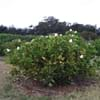Life Span
Perennial
Perennial
Origin
California
North America, Canada
Types
American Sycamore, Arizona Sycamore
North American sycamore, Middle Eastern sycamore ,The British sycamore
Habitat
Floodplains, River side, Stream side
bottomlands, Floodplains, Moist woods, Mountains
USDA Hardiness Zone
3-8
5-9
Sunset Zone
4, 5, 6, 7, 8, 9, 10, 11, 12, 13, 14, 15, 16, 18, 20, 21, 22, 23, 24
1a, 1b, 2a, 2b, 3a, 3b, 4, 5, 6, 7, 8, 9, 10, 11, 12, 13, 14, 15, 16, 17, 18, 19, 20, 21, 22, 23, 24
Habit
Upright/Erect
Upright/Erect
Flower Color
Yellow
Orange Red, Dark Salmon
Flower Color Modifier
Bicolor
Bicolor
Fruit Color
Sandy Brown
Tan, Sandy Brown
Leaf Color in Spring
Light Green
Green, Light Green
Leaf Color in Summer
Light Green
Green, Dark Green
Leaf Color in Fall
Sandy Brown
Gold, Tan
Leaf Color in Winter
Not Available
Not Available
Leaf Shape
Toothed
Orbicular
Plant Season
Not Available
Spring, Summer, Fall, Winter
Sunlight
Full Sun, Partial Sun
Full Sun
Growth Rate
Fast
Not Available
Type of Soil
Clay, Loam, Sand
Clay, Loam, Sand
The pH of Soil
Acidic, Neutral
Acidic, Neutral
Soil Drainage
Average
Average
Bloom Time
Not Available
Spring
Tolerances
Wet Site, Drought
Wet Site, Pollution, Salt, Soil Compaction
Where to Plant?
Ground
Ground
How to Plant?
Seedlings, Stem Planting, Transplanting
Seedlings
Plant Maintenance
Medium
Medium
Watering Requirements
Keep the ground moist but not water-logged, Never Over-water
Needs more water during establishment, Needs Very high moisture
In Summer
Lots of watering
Lots of watering
In Spring
Moderate
Moderate
In Winter
Average Water
Average Water
Soil pH
Acidic, Neutral
Acidic, Neutral
Soil Type
Clay, Loam, Sand
Clay, Loam, Sand
Soil Drainage Capacity
Average
Average
Sun Exposure
Full Sun, Partial Sun
Full Sun
Pruning
Prune in the late winter or spring, Remove damaged leaves, Remove dead leaves, Remove hanging branches, Remove short branches, Remove short twigs
Remove damaged leaves, Remove dead branches, Remove dead leaves
Fertilizers
All-Purpose Liquid Fertilizer
All-Purpose Liquid Fertilizer
Pests and Diseases
Red blotch
Anthracnose, Canker, Leaf spot, Powdery mildew
Plant Tolerance
Drought
Pollution, Salt, Soil Compaction, Wet Site
Flowers
Insignificant
Insignificant
Flower Petal Number
Not Available
Single
Foliage Texture
Coarse
Coarse
Foliage Sheen
Matte
Matte
Attracts
Not Available
Birds, Not Available
Allergy
Asthma, Eye irritation, Skin irritation
breathing problems, Skin irritation
Aesthetic Uses
Beautification, Landscape Designing, Showy Purposes
Landscape Designing, Mixed Border, Showy Purposes
Beauty Benefits
Not Available
Not Available
Environmental Uses
Air purification
Air purification, Food for animals, Food for birds, Nesting sites for birds, Prevent Soil Erosion, Shadow Tree
Medicinal Uses
Cold, Cough, Dysentry, Pain killer
Not Available
Part of Plant Used
Fruits
Bark, Flowers, Fruits, Sap
Other Uses
Decoration Purposes, Showy Purposes, Used as Ornamental plant
Animal Feed, Application in Furniture, Shelterbelt, Tea-like beverage can be brewed
Used As Indoor Plant
No
Insignificant
Used As Outdoor Plant
Yes
Yes
Garden Design
Shade Trees
Feature Plant, Landscape, Mixed Border, Shade Trees, Street Trees
Botanical Name
PLATANUS racemosa
PLATANUS occidentalis
Common Name
California Sycamore
American Planetree, American Sycamore, Eastern Sycamore, Buttonwood or Buttonball Tree
In Hindi
कैलिफोर्निया गूलर
अमेरिकी गूलर
In German
California sycamore
Amerikanische Platane
In French
californie sycomore
Platanus occidentalis
In Spanish
california sicómoro
Platanus occidentalis
In Greek
Καλιφόρνια συκομουριά
Platanus occidentalis
In Portuguese
califórnia sicômoro
Platanus occidentalis
In Polish
california jawor
Platan zachodni
In Latin
california sycomoros
Platanus orientalis
Phylum
Magnoliophyta
Magnoliophyta
Class
Magnoliopsida
Magnoliopsida
Order
Proteales
Scrophulariales
Family
Platanaceae
Platanaceae
Clade
Angiosperms, Eudicots
Angiosperms, Eudicots
Tribe
Not Available
Not Available
Subfamily
Not Available
Not Available
Season and Care of California Sycamore and American Sycamore
Season and care of California Sycamore and American Sycamore is important to know. While considering everything about California Sycamore and American Sycamore Care, growing season is an essential factor. California Sycamore season is Not Available and American Sycamore season is Not Available. The type of soil for California Sycamore is Clay, Loam, Sand and for American Sycamore is Clay, Loam, Sand while the PH of soil for California Sycamore is Acidic, Neutral and for American Sycamore is Acidic, Neutral.
California Sycamore and American Sycamore Physical Information
California Sycamore and American Sycamore physical information is very important for comparison. California Sycamore height is 1,830.00 cm and width 1,520.00 cm whereas American Sycamore height is 2,130.00 cm and width 1,980.00 cm. The color specification of California Sycamore and American Sycamore are as follows:
California Sycamore flower color: Yellow
California Sycamore leaf color: Light Green
American Sycamore flower color: Orange Red and Dark Salmon
- American Sycamore leaf color: Green and Light Green
Care of California Sycamore and American Sycamore
Care of California Sycamore and American Sycamore include pruning, fertilizers, watering etc. California Sycamore pruning is done Prune in the late winter or spring, Remove damaged leaves, Remove dead leaves, Remove hanging branches, Remove short branches and Remove short twigs and American Sycamore pruning is done Remove damaged leaves, Remove dead branches and Remove dead leaves. In summer California Sycamore needs Lots of watering and in winter, it needs Average Water. Whereas, in summer American Sycamore needs Lots of watering and in winter, it needs Average Water.
